These are the most desirable towns in the North – is it time you moved?
Lymm offers the peace and quiet of rural living - as well as connections to urban Liverpool and Manchester - Roy Conchie/Alamy Stock Photo It is one of the great debates in British small talk - where does the North begin? Whether you draw the line at Cheshire, Sheffield, or even the Watford Gap, there is a world of beautiful landscapes, coastlines and countryside, as well as vibrant towns and cities, to discover beyond the M25.
Using data from estate agents Savills, Telegraph Money[1] has found the best places to live in the North - whether you're settling in a family home or investing in a holiday getaway[2]. The locations were ranked by the following criteria:
Percentage of higher managerial, administrative and professional workers
Percentage with qualifications equivalent to a Level 4 or above
Percentage who said they were in "good" or "very good" health
Median house prices
The top 10
Wealthy areas south of Manchester dominate the top 10, including the affluent suburbs of Hale and Altrincham, and villages in the "golden triangle" of Cheshire towns, such as Wilmslow. Also known as the "football belt" due to their popularity with Manchester City and United stars, house prices in these locations are high - although still lower than London.
"God's own county" is also represented, with picturesque Ilkley and family-friendly Horsforth in West Yorkshire being featured. Combining rural tranquillity with access to bustling Leeds and Bradford, the towns are popular with both retirees and young professional couples setting up home. Ponteland, at number eight, offers comfortable access to the striking landscape and coastline of Northumberland, as well as proximity to Newcastle airport.
Hale, Greater Manchester


Hale, south of Manchester, is a wealthy area with good transport links - Mark Waugh /https://www.alamy.com
A historic village first recorded in the Domesday Book, Hale is now a wealthy area located in south Trafford, Greater Manchester. Popular with commuters working in Manchester or Chester, with good transport links to both, it also offers a community atmosphere with its traditional high street and well-performing schools.
Altrincham, Greater Manchester
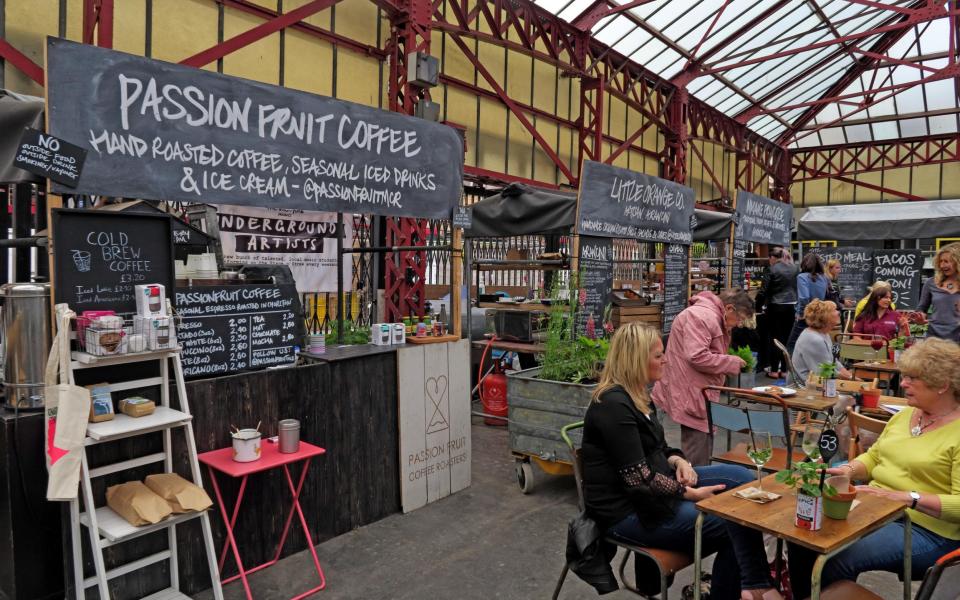

Altrincham, southwest of central Manchester, is a market town popular with families - Tony Smith //https://www.alamy.com Next door to Hale, this market town has been the preferred spot for middle-class families in Greater Manchester since the Industrial Revolution.
Story continues There's plenty to visit - 10 natural conservation areas provide lots of green space, in addition to a pedestrianised town centre and a historic market.
Lymm, Cheshire
A pretty village in the centre of Cheshire - complete with a town crier who'll let you know the latest news in his proclamations from the foot of the Lymm Cross - Lymm provides rural canal-side peace, as well as connections to urban Liverpool and Manchester for when you want some more hustle and bustle.
Wilmslow, Cheshire
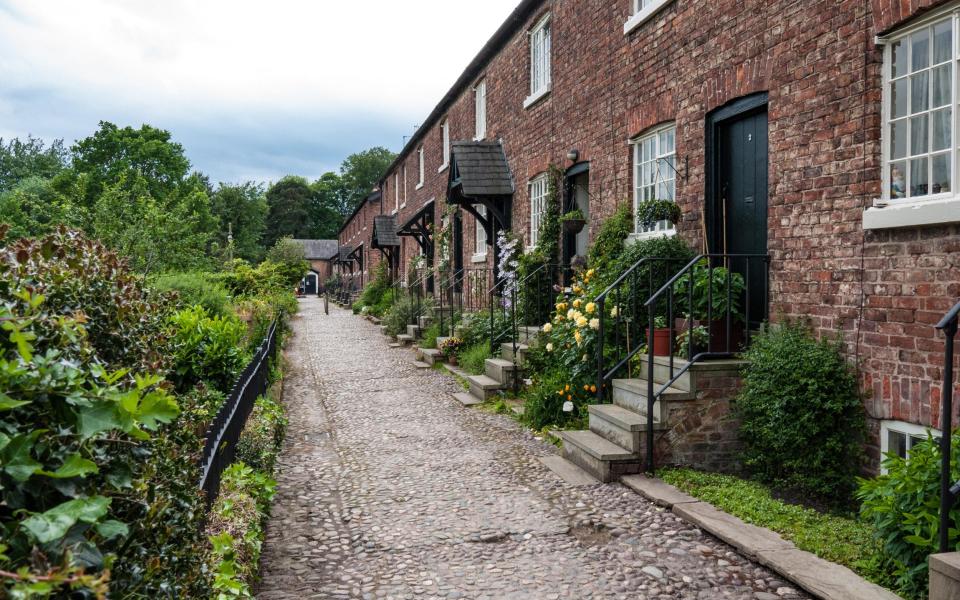

Wilmslow has an array of designer boutiques and department stores - and has Manchester Airport just a 15 minute drive from its centre - Stephen Sykes/Alamy Stock Photo Footballer cash has injected glamour into this Industrial Revolution-era town, with designer boutiques, department stores, and upmarket interior designers[3] making it their home, while Manchester airport is just a 15 minute drive from the centre.
Good schools attract families, and a direct two-hour train to London and quick connections to Manchester City Centre make it an attractive option for professionals.
Cheadle Hulme, Greater Manchester
Attractive Victorian and Edwardian properties and good transport links to central Manchester bring many families to this market town in Cheshire. In addition to a number of popular pubs, local eateries and larger shops, there's also "Chads" - a local theatre company which has its own auditorium that stages seven major shows per year - as well as a cricket club, squash club and golf club for entertainment.
Bramhall, Greater Manchester


Bramhall Hall & Park in Bramhall, with its huge Tudor-style building - Alan Novelli/Alamy Stock Photo This Stockport suburb retains a village feel, according to local estate agents Peter Anthony, with independent shops and cafes on the high street.
Bramhall Hall & Park is worth a visit - the huge Tudor-style building dates back to the Middle Ages, and is set in 70 acres of parkland. The local train station opens up connections to Stockport, Manchester Piccadilly, and Stoke-on-Trent.
Ilkley, West Yorkshire
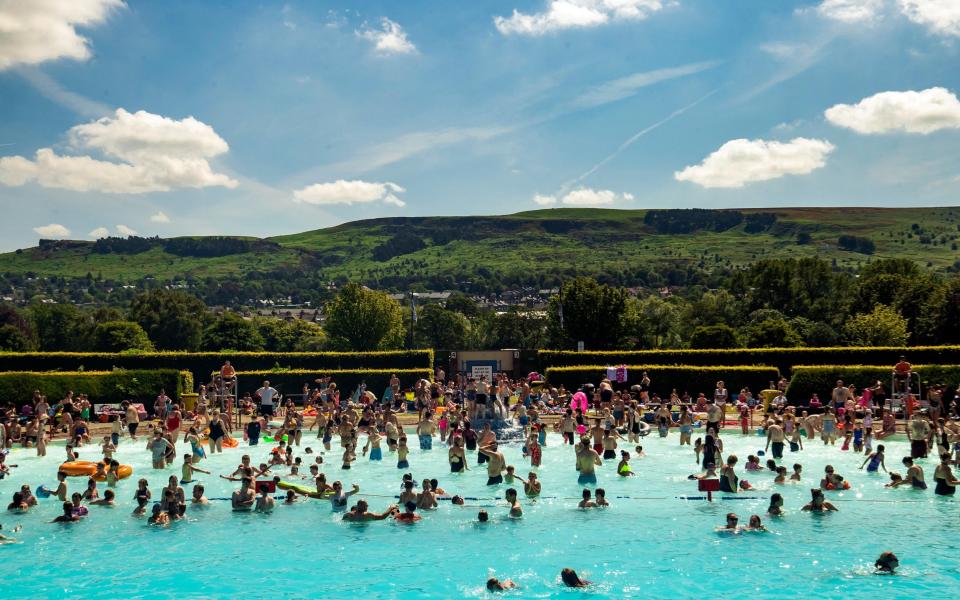

The Lido in Ilkley, a spa town in the Yorkshire Dales - PA Images/Alamy Stock Photo Famous for being the subject of the unofficial Yorkshire anthem "On Ilkla Moor Baht 'at", this spa town in the Yorkshire Dales offers a high quality of living in a bucolic landscape.
Surrounded by the moors, it makes an ideal base for commuting to Leeds and Bradford, with regular train services to both cities.
Ponteland, Northumberland
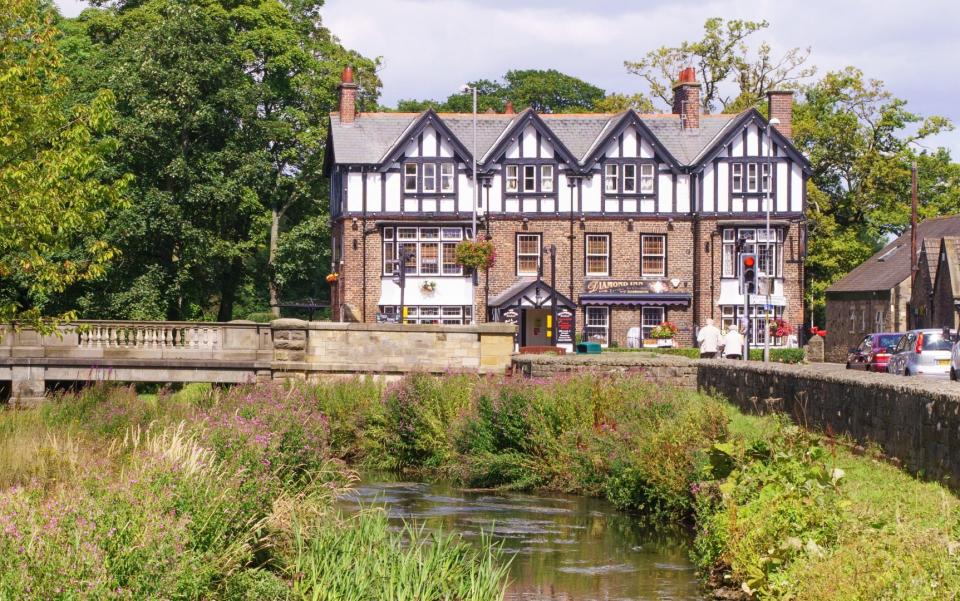

The river Pont and the Diamond Inn, in Ponteland - Washington Imaging/Alamy Stock Photo This small town in Northumberland has some of the most expensive houses in the North East, with buyers lured in by its location just outside of Newcastle and near to its airport, as well as being close to the countryside. Several people associated with Newcastle United live in the parish - including Alan Shearer and Peter Beardsley.
Knutsford, Cheshire
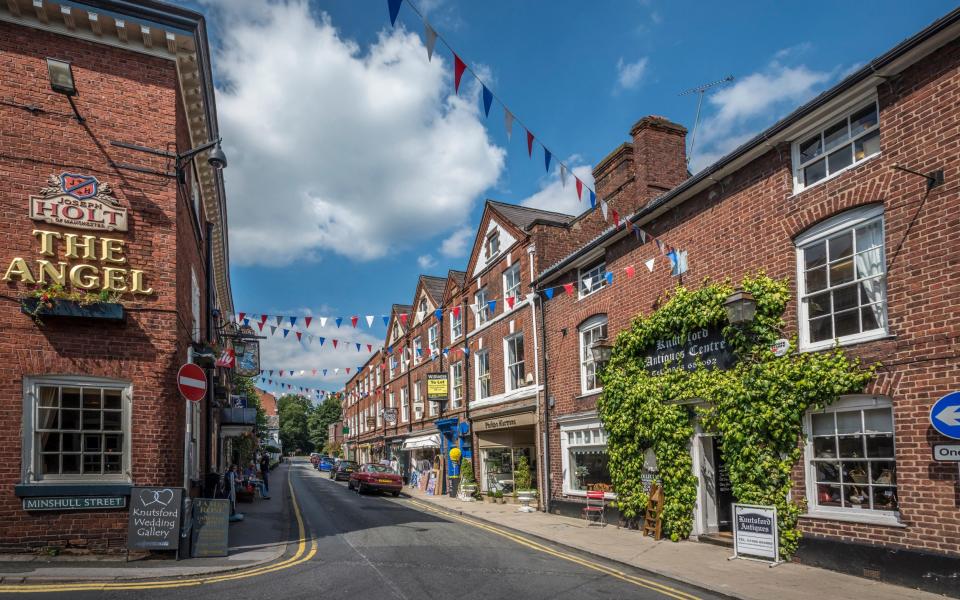

Knutsford in Cheshire, which served as the inspiration for Elizabeth Gaskell's classic novel Cranford - John Davidson Photos/Alamy Stock Photo
A market town in Cheshire with a well-heeled population and quaint cobbled streets, Knutsford is popular with footballers and commuters due to its transport links to Manchester and its independent shops. It served as the inspiration for Elizabeth Gaskell's classic novel Cranford, with a blue plaque on her former house.
Horsforth, West Yorkshire
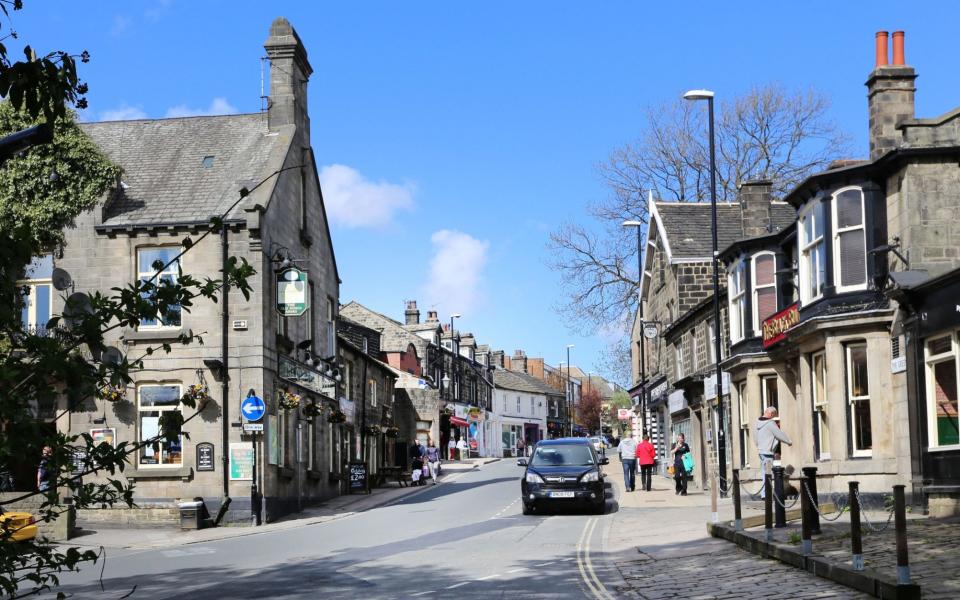

Horsforth achieved Fairtrade Town status in 2015 - Park Dale/Alamy Stock Photo Tucked away to the north-west of Leeds, this suburban town is surrounded by nature reserves and woods, with the Yorkshire moors just a short drive away.
Families and commuters particularly benefit from the connections to York and Leeds, while shoppers can enjoy local businesses, pubs and restaurants - with the town having achieved Fairtrade Town status in 2015. You can see the full list detailed in the table below:


Savills also highlighted three towns and cities that have made the most significant leap through the rankings in the past decade: Cheadle Hulme, Cheadle & Gatley in the North West, Whitley Bay in the North East, and York in Yorkshire and Humber.
Cheadle Hulme, Cheadle & Gatley
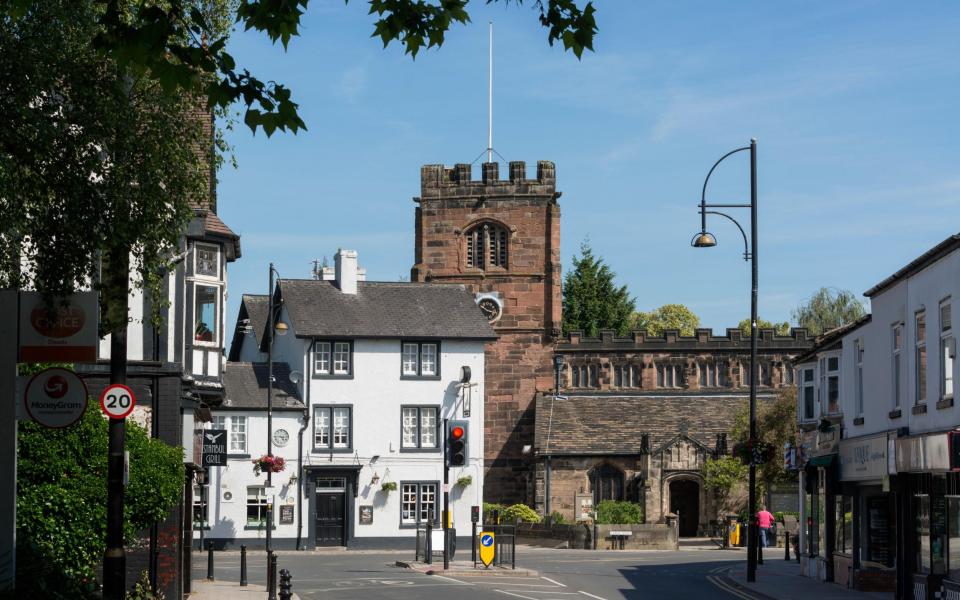

The White Hart Tavern and St Mary's Church in Cheadle, Cheshire - Russell Hart/Alamy Stock Photo Well positioned between Manchester and the Peak district, this cluster of towns is particularly popular with families.
Sought-after houses include period properties[4] in the conservation area in Cheadle centre, or in Gatley Village with its array of independent businesses. Direct trains from Cheadle Hulme can get travellers to Manchester in 20 minutes and to London in two hours. According to estate agents Reeds Rains, properties across the towns are "snapped up quickly".
There is a "good sense of community" in each, with restaurants, cafes, and pubs creating a "buzz" in the evenings. An excellent selection of private and state schools keeps young families in the area, while well-off retirees also choose to downsize. Andrew J Dawson estate agents said larger "homes of distinction" go for over GBP1m, while retirement flats are available from GBP75,000.
Whitley Bay


The late Victorian lighthouse on Whitley Bay's coastline - Owen Humphreys/PA
Whitley Bay's coastline has everything for a classic day out to the seaside, with ice-cream and fish and chip shops, arcades, parks, and a late Victorian lighthouse. Andrew Sawyers, an estate agent with J.G Sawyers & Sons, said "fantastic local schools" were a big draw to Whitley Bay, in addition to its proximity to beaches, as well as easy access to Newcastle via the Metro system, and the Northumberland coast. "We also have a wealth of thriving independent shops, businesses, as well as fantastic bars and restaurants", said Mr Sawyers.
"The housing market is mainly families - local families as well as those who are relocating from other parts of the country - as they are now working from home[5] and wish to have access to the coastline and good schools," he added. Prices are up by around 20pc since the pandemic, with buyers "reassessing" their needs post-lockdown. "Overwhelming demand for properties massively outstripped supply which caused prices to rocket in a very short space of time.
"The market has stabilised since the Liz Truss mini-Budget, prices have marginally rescinded as a consequence in the past 12 months. "Properties which are priced correctly are still selling and demand is fair, but it's more a buyer's market now, whereas before the mini budget it was a strong seller's market."
York
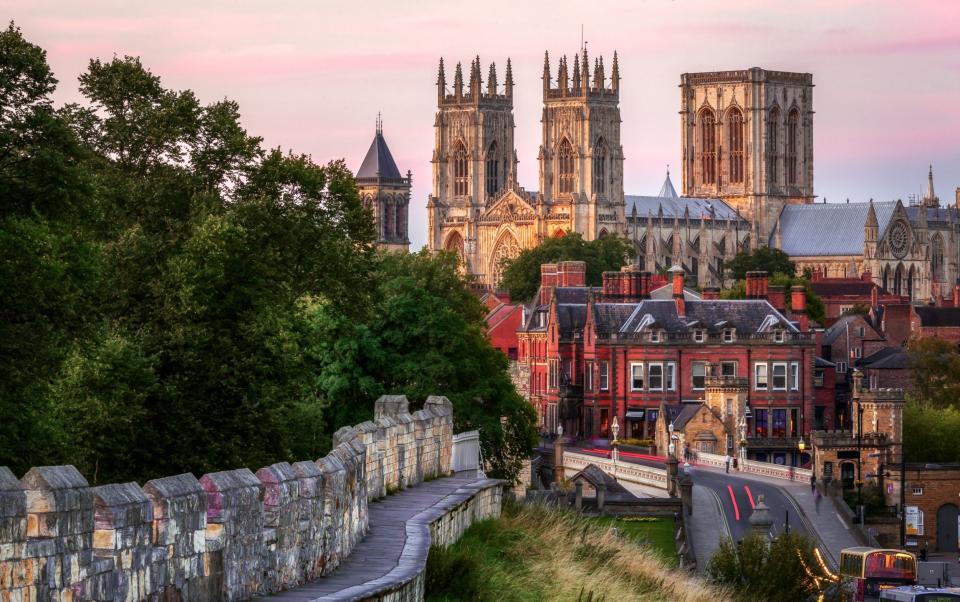

House prices in York have risen roughly 20pc over the past three years - Joe Daniel Price Ed Stoyle, head of Savills York, said there had been roughly a 20pc increase in house prices[6] in the last three years.
"York and Yorkshire have performed better than most regions, and we've seen the least impact in the latest squash in prices," he said. Most buyers are downsizing or choosing to move because they want to bring up children in the city, he said. Many return from London because they have family in the area, or want to use York as a base for the rest of Yorkshire[7] and the North.
"It's a nice city, in that you can live right in the centre," Mr Stoyle added. It is "the favoured spot" in North Yorkshire, he said, part of another "golden triangle" with Leeds and Harrogate. Professionals who only need to be in a London office a few times a month benefit from fast trains to the capital.
York is not super cheap, Mr Stoyle said, but prices are lower compared to London. The "jackpot" is finding a period property within the city walls. Townhouses in the centre can go for GBP1.5m to GBP2m, although the upper-end is unusual for the market.
History buffs will be able to keep busy with York's array of churches, museums, and architecture spanning the centuries - from the medieval walls to Georgian townhouses. The city's cathedral, The Minster, is the largest Gothic cathedral in Northern Europe. Recommended
Find your ultimate commuter town
